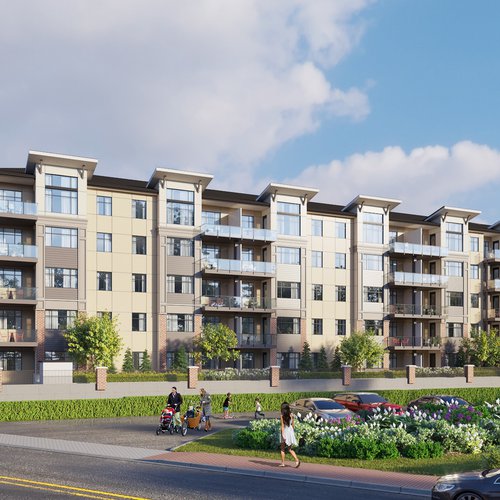March 25, 2024
tags : categories: 3D Rendering , Interior Rendering , Exterior Rendering , Property Development , Architects , 3D Siteplans
The architecture industry is currently witnessing a transformational shift towards more innovative, efficient, and sustainable practices, with traditional methods being replaced by newer ones. At the forefront of this shift are two methodologies - Design for Manufacture and Assembly (DfMA) and 3D rendering - that, when integrated, streamline the architectural process from concept to construction. This combination represents not only an evolution in architectural practice but also a revolution in how buildings are designed, manufactured, and assembled.
Understanding DfMA in the Architectural Context
Initially developed for the manufacturing industry, Design for Manufacture and Assembly (DfMA) is a design approach that emphasizes simplicity and efficiency in product design. In architecture, DfMA translates to designing buildings with components that can be prefabricated in a factory setting and then efficiently assembled on-site. This approach represents a significant shift from traditional construction practices, where most work is done on-site.
The Emergence of 3D Rendering in Architecture
3D rendering involves creating three-dimensional, photorealistic images from architectural designs using sophisticated software. This technology allows architects and clients to visualize the finished product realistically, long before construction begins. It has become an essential tool in modern architectural practice, aiding in design, planning, and client communication.
The Convergence of DfMA and 3D Rendering
The integration of DfMA with 3D rendering is transforming the architectural industry by streamlining the design and construction process. 3D rendering allows for detailed visualization of the prefabricated components designed through DfMA, ensuring that they are not only aesthetically pleasing but also precisely manufactured and easily assembled. This integration reduces the risk of errors during construction, saving time and resources.
Enhancing Design Efficiency and Precision
By combining DfMA with 3D rendering, architects can significantly enhance the efficiency and precision of their designs. 3D rendering provides a clear and accurate representation of how the prefabricated components will fit together, allowing for adjustments and optimizations to be made in the design phase. This level of precision is crucial in minimizing on-site construction issues and ensuring a smooth assembly process.
Streamlining Communication and Collaboration
Effective communication and collaboration are vital in any architectural project. The clarity provided by 3D renderings of DfMA designs facilitates better communication among architects, builders, and clients. This clear visualization helps all parties to have a shared understanding of the project, reducing misunderstandings, and streamlining the decision-making process.
Reducing Construction Time and Cost
One of the most significant benefits of integrating DfMA with 3D rendering is the reduction in construction time and cost. Prefabricating components in a controlled factory environment enhances quality control and speeds up the construction process. Additionally, the ability to identify and rectify potential issues during the design phase through 3D rendering minimizes costly on-site errors and delays.
Driving Sustainability in Architecture
Sustainability is a growing concern in the architectural industry, and the combination of DfMA and 3D rendering contributes positively to this aspect. By optimizing material usage and reducing waste during the manufacturing process, DfMA promotes eco-friendly construction practices. Moreover, the precision of 3D rendering aids in designing energy-efficient buildings by allowing for accurate simulations of lighting, insulation, and ventilation.
Tackling Complex Architectural Challenges
The integration of DfMA and 3D rendering is particularly advantageous in tackling complex architectural challenges. This approach allows for the realization of innovative designs that might be difficult to achieve through traditional construction methods. Complex geometries and intricate details can be precisely manufactured and visualized, pushing the boundaries of architectural creativity.
The Future of Architectural Practice
The integration of DfMA and 3D rendering is set to become a standard practice in the architectural industry going forward. As these technologies continue to advance, they will offer even greater capabilities in terms of design complexity, manufacturing precision, and construction efficiency. The future of architectural practice will likely see a greater emphasis on modular and prefabricated structures, driven by the efficiency and sustainability offered by DfMA and 3D rendering.
Conclusion
The integration of DfMA and 3D rendering is revolutionizing the architectural industry by offering a more streamlined, efficient, and sustainable approach to building design and construction. This combination not only enhances the quality and precision of architectural projects but also reduces construction time, cost, and waste, paving the way for a more sustainable future.










